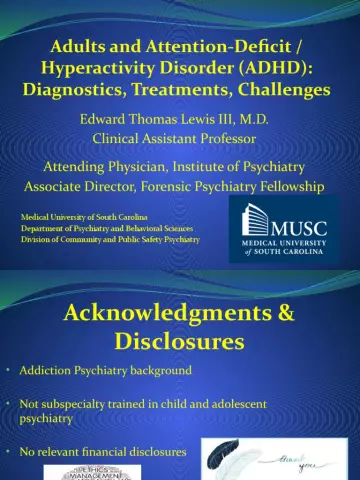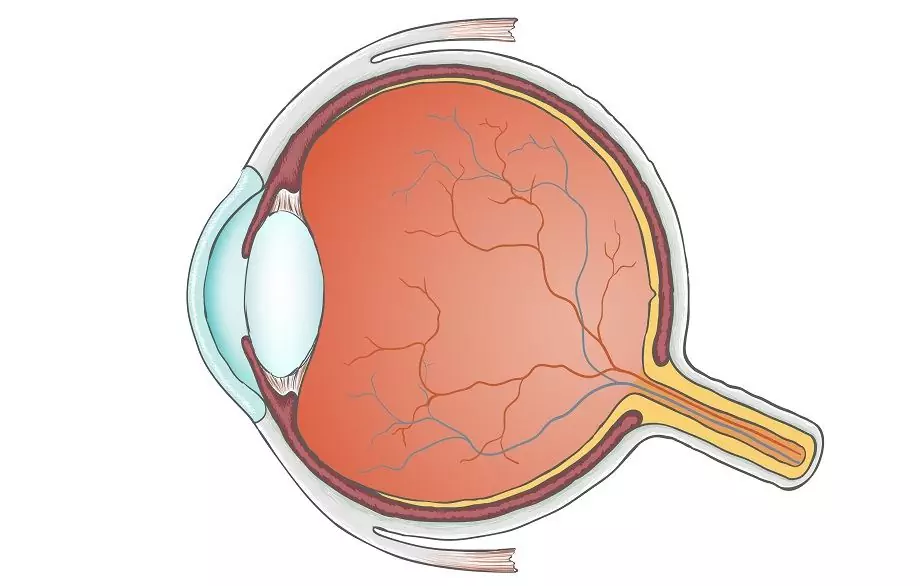- Author Rachel Wainwright [email protected].
- Public 2023-12-15 07:39.
- Last modified 2025-11-02 20:14.
Dyslexia

Dyslexia is a common learning problem in children with a specific reading disorder. The disease is of a neurological nature and is characterized by the inability of a person to correctly and quickly recognize words, as well as to master spelling skills.
Dyslexia classification
The classification of dyslexia is based on different criteria. So, depending on the disturbed operations of the reading process, they distinguish agrammatic, semantic, optical, mnestic, tactile and phonemic dyslexia.
The agrammatic form of the disease is associated with the underdevelopment of the grammatical structure of speech, syntactic and morphological generalizations. It is characterized by a change in the number of pronouns and nouns, case endings, incorrect coordination of adjectives and nouns, and incorrect use of verbs of the 3rd person of the past tense. It is more common in people suffering from systemic speech underdevelopment.
Semantic dyslexia is manifested by a violation of the understanding of the read words and sentences with technically correct reading. This is due to two main factors: the vagueness of ideas about connections of a syntactic nature and the difficulties in synthesizing sounds and syllables.
With problems that are associated with the assimilation and mixing of similar letters, they speak of optical dyslexia. In this case, the letters being mixed can be very similar and differ only in one element, for example, M and L, or consist of parts of the same type, but differently located in space, like G and T or P and L.
The mnestic form of the disease manifests itself in the event that difficulties are associated with the assimilation of all letters. It is due to the fact that the child's processes of establishing connections between a specific sound and the corresponding letter are disturbed.
Blind and visually impaired children have tactile dyslexia, the cause of which is the fuzziness of tactile perception.
Phonemic dyslexia is common among elementary school students and is characterized by the fact that they cannot learn to read correctly for 2-4 years. Some students learn letters with difficulty and do not know how to put them into words and syllables, other children learn them easily, but they make many mistakes when reading, since for them the letter is not a generalized graphic sign (grapheme). According to the author of the presented classification of dyslexia, this is due to poor phonemic hearing.
Thus, semantic, agrammatic and phonemic dyslexias arise due to the lack of formation of speech functions, and optical, tactile and mnestic dyslexia - due to the underdevelopment of mental functions.
Dyslexia symptoms
Common dyslexic symptoms that dyslexics experience include the following:
- Disorganization;
- Developmental delay;
- Spatial disorientation;
- Misunderstanding of what has been read;
- Difficulty learning words and perceiving information;
- Clumsiness, lack of coordination.
Also worth noting are some other non-mental dyslexia symptoms:
- Poor reading skills with a high level of intelligence;
- Repetition of mistakes that arise in the process of reading or writing;
- Failure to complete the task within the time allotted for it;
- Difficulty writing;
- Poor memory;
- Difficulty identifying right and left sides, top and bottom.
Dyslexia treatment and correction
In the treatment of dyslexia, an individual approach is important. A special correction program is selected for each patient. Thanks to such courses, sufferers of the disease acquire reading skills and feel much more confident in a wide variety of activities. Among the methods for correcting dyslexia are oral work, the use of a variety of technical means, as well as alternative ways of teaching.
Often, the disorder remains a lifelong problem, while reading skills are also common. However, a certain part of dyslexics never reach the proper level of literacy.

A feature of dyslexia treatment is that the entire educational process is subject to correction, including indirect and direct training in the skills of highlighting individual components and recognizing words. Direct teaching is the use of special phonetic methods regardless of the process of mastering reading skills, indirect - the introduction of these methods directly into the curriculum. In this case, the approach to the process can be different: either a sequential study of sounds, words and sentences, or learning to read with words and expressions in general.
When correcting dyslexia, it is important to use approaches in which several senses are involved at once (vision, hearing, touch). In this regard, it is useful for the child to master the computer.
Other treatments for dyslexia (such as perceptual or optometric training), as well as drug therapy have no proven efficacy and are therefore not recommended.
If you suspect dyslexia and in case of any speech disorders, consultation with a speech therapist is necessary.
YouTube video related to the article:
The information is generalized and provided for informational purposes only. At the first sign of illness, see your doctor. Self-medication is hazardous to health!






